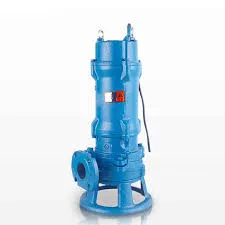English
- Afrikaans
- Albanian
- Amharic
- Arabic
- Armenian
- Azerbaijani
- Basque
- Belarusian
- Bengali
- Bosnian
- Bulgarian
- Catalan
- Cebuano
- Corsican
- Croatian
- Czech
- Danish
- Dutch
- English
- Esperanto
- Estonian
- Finnish
- French
- Frisian
- Galician
- Georgian
- German
- Greek
- Gujarati
- Haitian Creole
- hausa
- hawaiian
- Hebrew
- Hindi
- Miao
- Hungarian
- Icelandic
- igbo
- Indonesian
- irish
- Italian
- Japanese
- Javanese
- Kannada
- kazakh
- Khmer
- Rwandese
- Korean
- Kurdish
- Kyrgyz
- Lao
- Latin
- Latvian
- Lithuanian
- Luxembourgish
- Macedonian
- Malgashi
- Malay
- Malayalam
- Maltese
- Maori
- Marathi
- Mongolian
- Myanmar
- Nepali
- Norwegian
- Norwegian
- Occitan
- Pashto
- Persian
- Polish
- Portuguese
- Punjabi
- Romanian
- Russian
- Samoan
- Scottish Gaelic
- Serbian
- Sesotho
- Shona
- Sindhi
- Sinhala
- Slovak
- Slovenian
- Somali
- Spanish
- Sundanese
- Swahili
- Swedish
- Tagalog
- Tajik
- Tamil
- Tatar
- Telugu
- Thai
- Turkish
- Turkmen
- Ukrainian
- Urdu
- Uighur
- Uzbek
- Vietnamese
- Welsh
- Bantu
- Yiddish
- Yoruba
- Zulu
Telephone: +86 13120555503
Email: frank@cypump.com
Nov . 21, 2024 22:14 Back to list
'designing slurry pump impellers for optimal ...'
Designing Slurry Pump Impellers for Optimal Performance
Slurry pumps play a crucial role in various industries, particularly in mining, mineral processing, and wastewater treatment. The efficiency and effectiveness of a slurry pump largely hinge on the design of its impeller. An optimally designed impeller can significantly enhance the pump's performance by improving flow characteristics, increasing efficiency, and minimizing wear and tear. This article explores key considerations in designing slurry pump impellers for optimal performance.
Understanding Slurry Pumps
Slurry pumps are specialized pumps designed to handle a mixture of liquid and solid particles—known as slurry. Unlike standard pumps that deal with clean liquids, slurry pumps need to tackle challenges such as high viscosity, erosive materials, and the tendency for particles to settle and clog. Therefore, the impeller design becomes critical, affecting the pump's ability to move slurry effectively while reducing operational complications.
Key Design Principles
1. Hydraulic Design The hydraulic design of the impeller involves its shape, size, and the orientation of its blades. A well-designed impeller should facilitate smooth flow, reduce turbulence, and minimize energy loss. Factors such as the inlet diameter, blade angle, and number of blades directly influence the pump's ability to handle specific slurry types. For example, increasing the number of blades can enhance performance, but care must be taken not to compromise flow area.
2. Materials Selection The choice of materials for the impeller is paramount due to the abrasive nature of slurries. Common materials include high-chrome alloys and rubber linings, both of which offer excellent resistance to wear. The selection depends on the type of solids in the slurry; abrasive materials require harder surfaces, while corrosive environments may necessitate specific alloys or coatings.
3. Clearance and Tolerance Proper clearances between the impeller and the pump casing are essential to minimize recirculation and maximize efficiency. However, if the clearance is too tight, it can lead to increased wear and mechanical failure. Striking the right balance is crucial for prolonged pump life.
'designing slurry pump impellers for optimal ...'

4. Impeller Geometry The geometry of the impeller significantly impacts the dynamics of the slurry flow. Radial, mixed, and axial flow designs each serve distinct purposes. Radial flow impellers are typically better for high-head applications, while axial flow designs facilitate higher flow rates with lower heads. Mixed flow impellers offer a compromise between the two, making them suitable for diverse applications.
5. Hydraulic Performance Performance metrics such as pumping efficiency, head, and Net Positive Suction Head (NPSH) are vital in the design process. Computational Fluid Dynamics (CFD) simulations can be invaluable in predicting the hydraulic performance of the proposed impeller design and refining it before physical prototypes are created.
Testing and Validation
Before finalizing the impeller design, rigorous testing is imperative. Prototyping and pilot testing allow engineers to evaluate the design under real conditions. Key performance indicators to monitor include flow rate, pressure head, and energy consumption. Data collected during testing informs adjustments and optimizations to enhance performance.
Future Trends in Design
Advancements in technology are paving the way for more sophisticated impeller designs. The incorporation of AI and machine learning in design processes facilitates predictive analysis and process optimization. Furthermore, additive manufacturing may soon allow for custom impeller designs that are adaptable to changing operational conditions and slurry compositions.
Conclusion
Designing slurry pump impellers for optimal performance is a multifaceted process that requires careful consideration of hydraulic principles, materials, clearances, geometry, and performance testing. By leveraging innovative technologies and best practices, engineers can create impellers that significantly improve the efficiency, reliability, and lifespan of slurry pumps. As industries continue to push for more efficient and sustainable operations, the role of advanced impeller design will be ever more critical in meeting these demands.
-
ISG Series Pipeline Pump - Chi Yuan Pumps | High Efficiency, Durable Design
NewsAug.01,2025
-
Advanced Flue Gas Desulfurization Pump with GPT-4 Turbo | Durable & Efficient
NewsJul.31,2025
-
ISG Series Vertical Pipeline Pump - Chi Yuan Pumps | Advanced Hydraulic Design&Durable Construction
NewsJul.31,2025
-
ISG Series Vertical Pipeline Pump - Chi Yuan Pumps | Energy Efficient & Low Noise
NewsJul.31,2025
-
pipeline pump - Chi Yuan Pumps Co., LTD.|High Efficiency&Low Noise
NewsJul.31,2025
-
ISG Series Vertical Pipeline Pump - Chi Yuan Pumps Co., LTD.|High Efficiency, Energy Saving, Low Noise
NewsJul.30,2025










